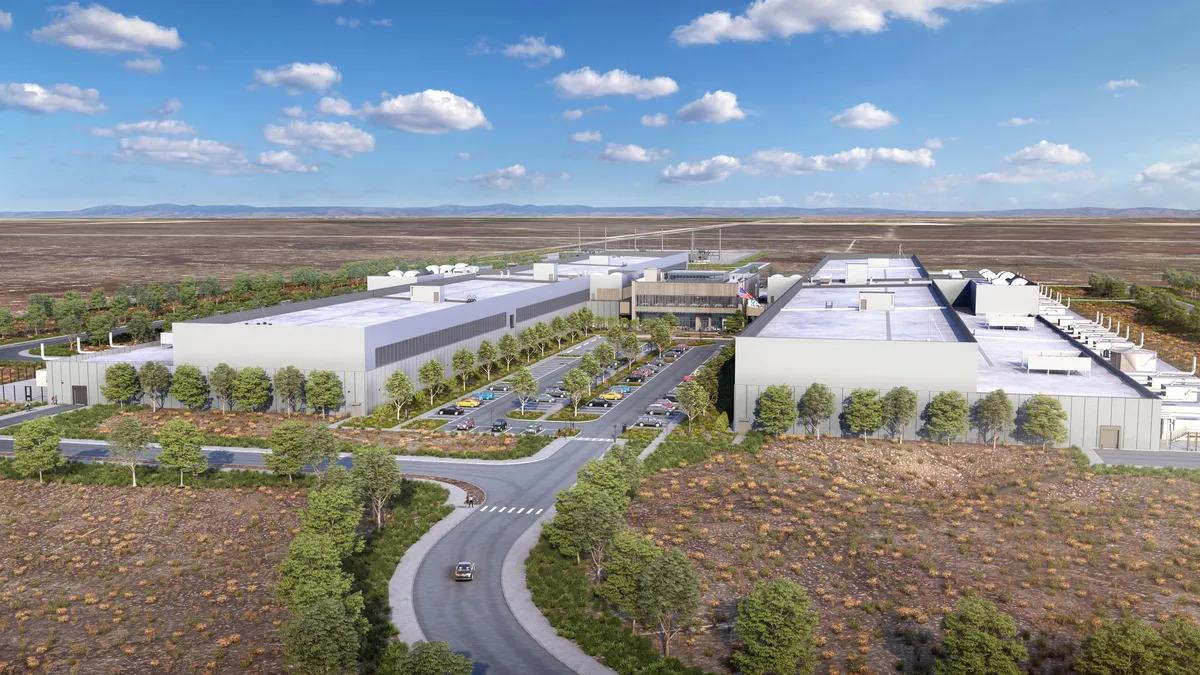Will the technology sell-off put an end to the data center construction boom?
High inflation, rising interest and plummeting stocks are taking a toll on Big Tech.
Meta, the parent company of Facebook, Instagram and WhatsApp, axed 11,000 jobs this month. Meanwhile, Amazon rang in the holiday season by announcing 10,000 layoffs of its own. Other big names, including Snapchat, Lyft and Twitter also slashed workers.
Despite the amount of blood on tech firms' payroll ledgers, though, these massive cuts are not expected to affect the blistering pace of data center construction, according to industry sources.
Danny Horton, senior project manager of the data center division at PCL Construction’s Seattle office, said to expect the same steady growth within the data center industry over the next three years due to the “unwavering demand for data and cloud storage.”
“There is too much demand for these structures,” said Horton. “And while the layoffs have hit the industry hard, new opportunities continue to arise, and we’ll keep seeing momentum and growth for years.”
Data center construction activity pushes forward
Alex Barake, business development director for Northern California at Boston-based Suffolk Construction, recently pinpointed the data center market as one of the “bright spots” in construction. Meanwhile, Richard Branch, chief economist at Dodge, remains upbeat on the sector.
“We’re pretty bullish on where data center [construction] will be both this year and next year,” said Branch during a Nov. 15 Dodge webinar.
To understand why, it helps to differentiate the types of data centers being built today. Hyperscale data centers, for example, are massive facilities built by companies like Meta, Twitter and Amazon that have vast data processing and storage needs. On the other hand, colocation data centers are facilities that rent space to third parties.
Three of the four biggest commercial construction projects to start this year through September were hyperscale data centers built by Meta, according to Dodge. They are:
- $950 million Meta Hyperscale Data Center in Temple, Texas.
- $800 million Meta Data Center Building 7 & 8 in Los Lunas, New Mexico.
- $800 million Meta Data Center in Kuna, Idaho.
Given big tech's recent reckoning, hyperscale projects may indeed slow. For example, Twitter's new owner and CEO Elon Musk is reportedly considering whether to shut down one of Twitter’s three main U.S. data centers, according to The New York Times. Musk is also believed to be looking to trim the company’s cloud costs, according to Data Center Dynamics.
Nevertheless, Horton said while hyperscale data center pullbacks are always a concern, tech companies’ current woes should not detract from future development plans. That’s because top colocation providers are filling in the gap, and are “actually leading the industry in time-to-market and scalability,” said Horton.
One of the unique ways colocation providers are able to improve the overall construction timeline of a smaller data center is by retrofitting an existing facility, said Horton. This could range from a repurposed warehouse to an older data center simply in need of a refresh.
Colocation projects can easily shave four to six months off a typical greenfield approach by bypassing site selection, new region planning and permitting, utility coordination and shell construction, said Horton.
“There is still a lot of work available to meet the constant demand we’re experiencing at all levels,” said Horton. “Colocation players are building smaller and more efficiently, and they can get data center space to the market in a considerably shorter period, so development will continue at all levels of data center construction.”
Setting the pace
Nvidia, a Santa Clara, California-based technology company and America’s largest chipmaker, also reported strong demand from its data center customers, who buy Nvidia’s chips for their projects.
The firm's data center segment raked in $3.83 billion in sales, up 31% year-over-year, according to its 2023 fiscal third quarter earnings call. That “reflects very solid performance in the face of macroeconomic challenges, new export controls and lingering supply chain disruptions,” said Colette Kress, executive vice president and chief financial officer at Nvidia during the call.
Taken together, observers say these trends show demand for data center construction remains stronger than ever, despite big tech's plunge.
For example, Darren Flood, director of Turton Bond, a New York-based real estate consultant, said earlier this summer that his firm’s data center clients want to build, even in an uncertain economic environment.
“[My clients] said that they have never been building at this pace,” said Flood. “That pace going forward is only going to increase.”





















